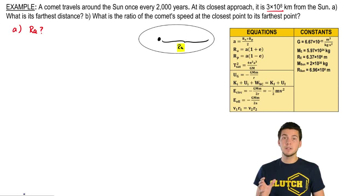Here are the essential concepts you must grasp in order to answer the question correctly.
Relative Motion
Relative motion refers to the calculation of the motion of an object as observed from a particular reference point. In this scenario, David is moving at a constant speed while Tina starts from rest and accelerates. Understanding relative motion is crucial to determine how far Tina must travel to catch up with David.
Recommended video:
Intro to Relative Motion (Relative Velocity)
Kinematics Equations
Kinematics equations describe the motion of objects under constant acceleration. For Tina, who accelerates at 2.0 m/s², the equation s = ut + 0.5at² can be used, where 's' is the distance traveled, 'u' is the initial velocity (0 m/s), 'a' is the acceleration, and 't' is the time. These equations help calculate the distance Tina travels before passing David.
Recommended video:
Time of Travel
Time of travel is a critical factor in motion problems, as it determines how long an object is in motion. In this case, we need to find the time it takes for Tina to catch up to David, who is moving at a constant speed. By equating the distances traveled by both David and Tina, we can solve for the time and subsequently the distance Tina covers.
Recommended video:
Comet Traveling Around the Sun
 Verified step by step guidance
Verified step by step guidance


